The Lamborghini Gallardo Story
The exciting history and story of how a small Lamborghini made a large impact in the supercar world.
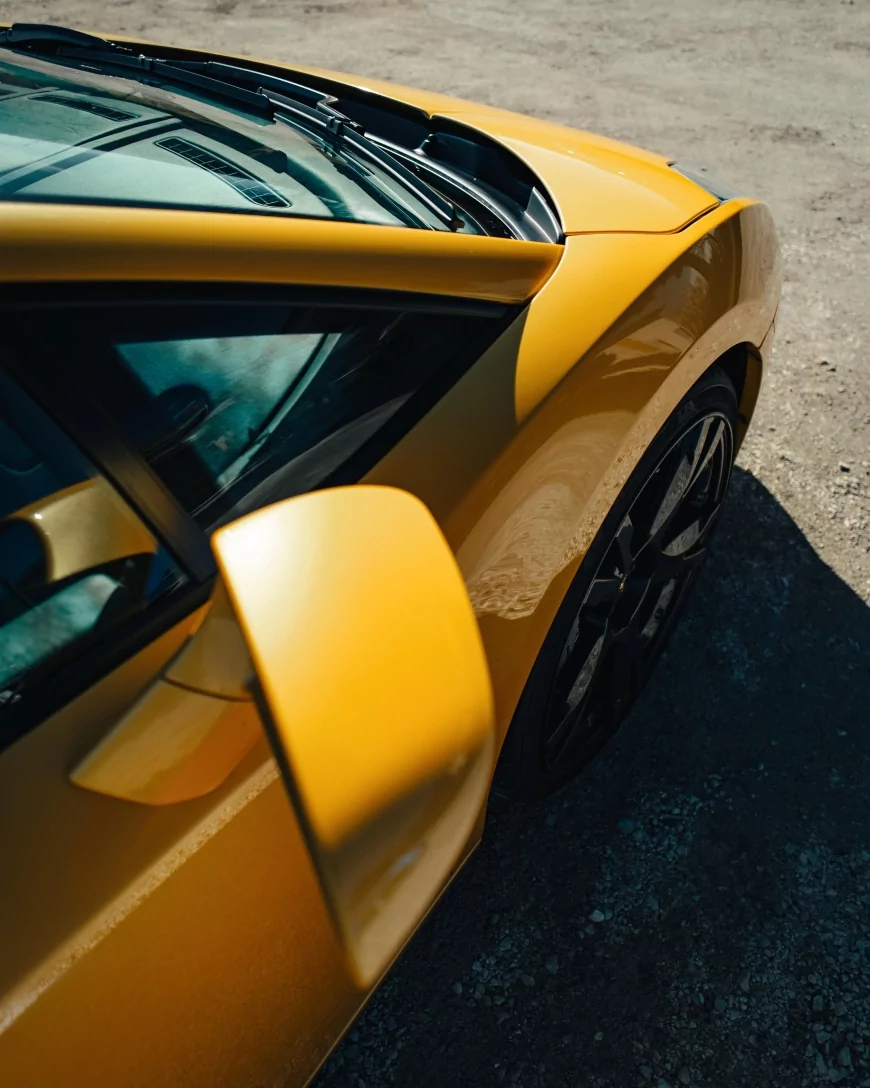 Photos by Automobili Lamborghini S.p.A.
Photos by Automobili Lamborghini S.p.A.
The Gallardo, presented at the 2003 Geneva Motor Show, was the first Lamborghini production vehicle with a V10 engine. Right from the start, it became an incredible commercial success achieving sales record after sales record for Lamborghini. On its twentieth anniversary, we look back at its history to celebrate the iconic "baby Lambo."
Ferruccio Lamborghini had already sensed that there was a market for a "smaller" Lamborghini and, above all, one with a lower price tag and running costs, and at the start of the 1970s, he encouraged the development of what would become the Urraco, which evolved during the 1980s into the Jalpa.
In 1987, Lamborghini started developing the L140 project to create a more compact Lamborghini. Over the years, several prototypes were developed, and various technical solutions were explored, including a V8 in the first instance and then a V10 engine.

In 1998, after careful consideration, it was decided to start again from scratch, taking as the foundations only the concept, general dimensions, and the idea of a ten-cylinder engine: something never installed before on a Lamborghini road car.
The brand-new engine was the result of the work of engineer Massimo Ceccarani who, after more than ten years in the company, took on the role of Technical Director, and of Maurizio Reggiani, who at the time was in charge of engine development and design in the Technical Office.
Maurizio Reggiani, Lamborghini Technical Director from 2006 to 2022, recalls that "The L140 had a 72° V10 engine with the gearbox integrated in the oil pan area, designed by Lamborghini, and not practical to produce for the type of car it was intended for. Furthermore, the position of the gearbox under the engine generated a high center of gravity, which wouldn't guarantee the drivability and handling characteristics that a super sports Lamborghini should have. So, when we started the project codenamed "Baby Diablo," a V8 was chosen. It was decided to look for a potential engine among those already on the market, including the 8-cylinder Audi. With the subsequent acquisition by Audi, it was decided to produce a completely new car with an aluminum tubular frame and a 10-cylinder engine, designed by Lamborghini, and a brand-new transmission, both manual and robotized."

The engine installed on the first Gallardo was a 5-liter, 10-cylinder V90 DOHC with four valves, delivering 500 HP. Instead of the classic choice of a V72, a 90-degree angle was favored to limit the engine's height, thus gaining advantages in the vehicle's layout (ie, lower engine hood and better rear visibility) and lowering the center of gravity for improved dynamics. Regular firing intervals (ensuring engine smoothness) were achieved by adopting "crankpins" with an 18-degree offset. A dry-sump lubrication system not only resulted in perfect lubrication even under extreme dynamic conditions but also further lowered the center of gravity.
As Maurizio Reggiani explains: "So that it could be produced in the planned quantities, the V10 had to have a 90° V, and so it was decided to adopt a “split pin” on the crankshaft, which allowed regular firing even if the crankcase had 90° cylinders. The crankcase, which up to then had inserted liners and Nikasil coating on the liner, was revised and redesigned by Lamborghini engineers, to be made with a hyper eutectic aluminum alloy that allowed the liner to be cast directly on the aluminum. This allowed the distance between the cylinders and, consequently, the length of the engine, the weight, and costs, to be reduced. This gave rise to the 5-liter 90° V10 MPI engine which was installed on the first Gallardo series."
Thus the first V10 was a state-of-the-art engine: 5 liters with dry-sump lubrication, double overhead camshafts for each cylinder bank, variable valve timing (4 valves per cylinder), and chain-driven distribution.
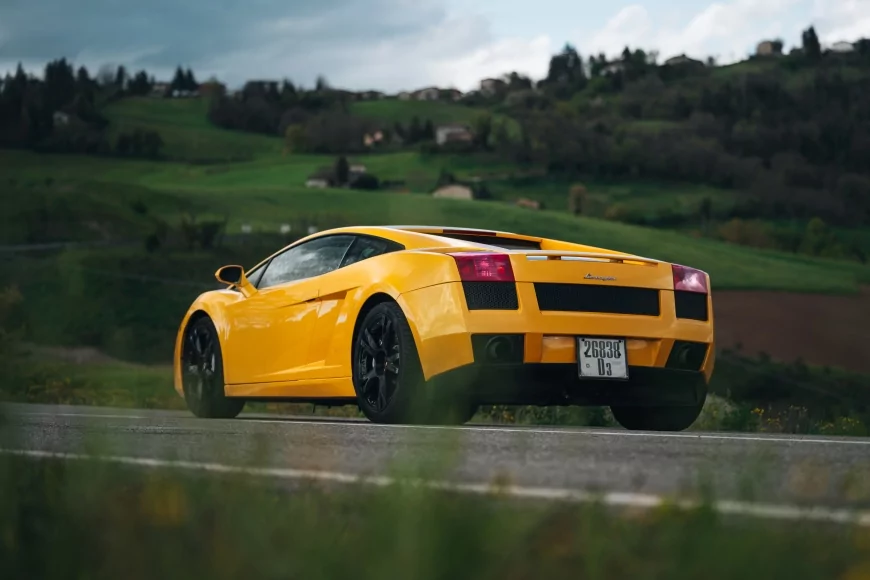
The 6-speed gearbox was equipped with the latest-generation double- and triple-cone synchronizers with optimized control and engagement system. It was behind the engine, while the all-wheel drive used the tried-and-tested VT system. A robotized sequential system (the Lamborghini e-gear, offered as an optional extra on this version) was also developed, keeping the gearbox's basic mechanics unchanged.
The all-aluminum structural chassis is based on extruded parts welded to cast connection elements. On this chassis, the external body parts are mounted with differentiated systems (rivets or screws or welding), depending on the piece's function. Other outer hang-on parts (such as bumpers) are made of thermoplastic material and connected by bolts.
The design project started in 2000 based on an initial "Italdesign-Giugiaro" proposal, then optimized and concluded by the newly established Lamborghini Centro Stile headed by Luc Donckerwolke. The task of the designers, demanding but at the same time fascinating, was to identify the formal attributes of the Lamborghini and combine them into an entirely individual unit. The dimensions of the Gallardo and its performance goals lent it a compact athleticism. The vehicle's wheelbase and reduced overhangs gave it a more dynamic look. A vital part of the Gallardo's iconic design, which was also on the Murciélago presented in 2001, was the strong aeronautics influence, seen in the cab-forward cockpit integrated into the body of the vehicle; in the sharply angled windshield with tensed pillars; in the complex treatment of flat surfaces crossed by distinct markings; and in the orientation of the cooling system elements in the direction of airflow.
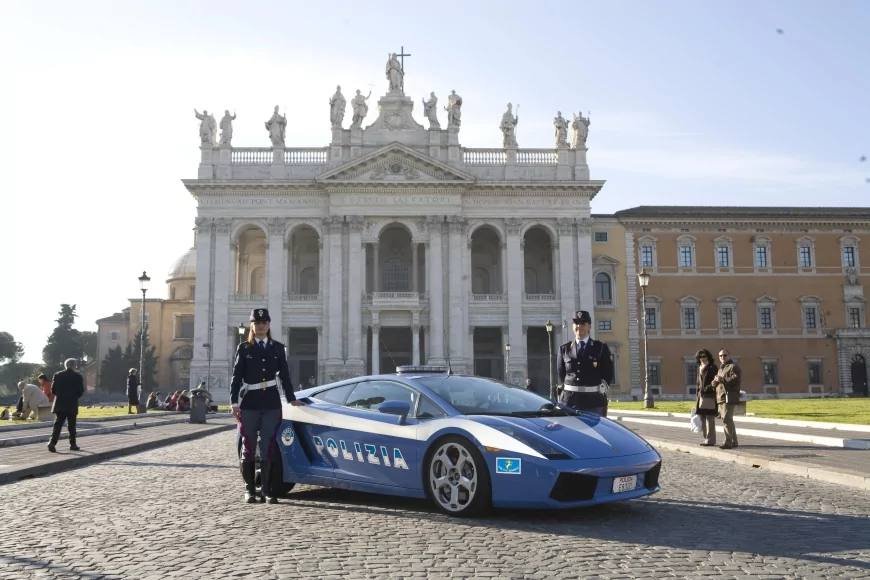
However, what made the Gallardo stand out when it came to market was its performance combined with drivability, reliability, and everyday practicality, so much so that it could be comfortably used as a daily drive.
In May 2004 the Gallardo started the tradition of "donating" cars to the Italian Police: the vehicles were used for special purposes, such as transporting organs or life-saving medicines.
In 2005, two years on from the launch of the coupé version, Automobili Lamborghini presented the Gallardo Spyder at the Frankfurt Motor Show; not just an “open top” version of the coupé, but a new model with a brand-new soft-top opening/closing system, also involving the vehicle's engine hood. The Lamborghini Gallardo Spyder also introduced significant new features regarding the engine, transmission, and performance. Its 4961 cc 10-cylinder engine now delivers power of 520 HP (382 kW) at 8000 rpm. The six-speed gearbox (always manual with the optional offer of the robotized e-gear version) now had a shorter gear ratio, resulting in more dynamic vehicle handling. These new engine features were also introduced in the coupé version starting from the 2006 model year.
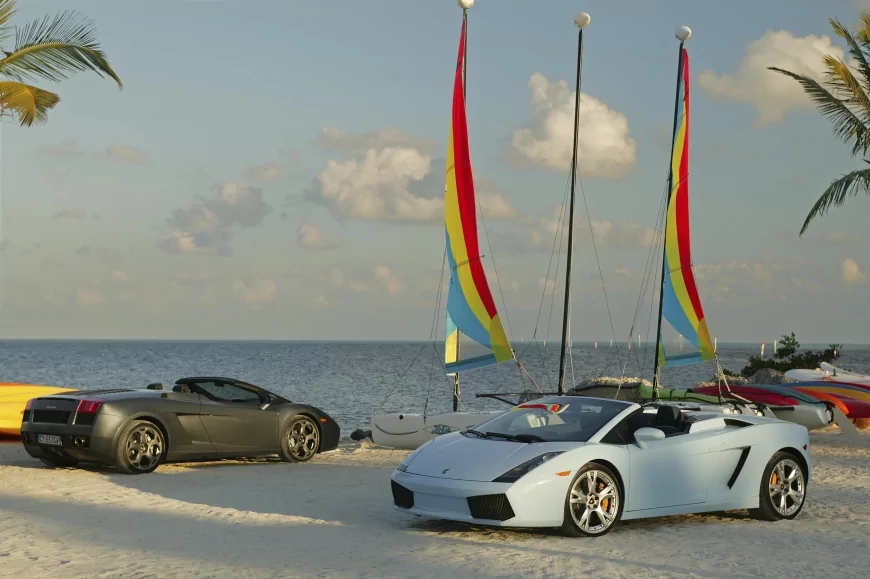
In 2007, when the "baby Lambo" production exceeded 5000 units since its presentation, the Gallardo Superleggera was presented in Geneva. Thanks to the 10 HP increase in power and a 100 kg weight reduction, the new model was even more dynamic, reaching a weight/power ratio of just 2.5 kg/HP. The Superleggera had a standard robotized mechanical gearbox, becoming a regular feature on all subsequent versions, and was available in four colors at no additional cost: Midas Yellow, Borealis Orange, Telesto Gray, and Noctis Black. Moreover, the Superleggera had many carbon fiber parts to substantially reduce weight, such as the fixed rear spoiler, an iconic optional extra for this version, and carbon-ceramic brakes.
At the Geneva Motor Show in March 2008, the LP 560-4 was presented, the revamped version of the Gallardo, 20 kg lighter, fitted with a 5.2-liter V10 engine with a maximum power output of 560 CV and a direct stratified injection system. Also, in 2008, the production of the Gallardo reached 7100 units. The Los Angeles Motor Show in November of the same year saw the presentation of the open-top version, the LP 560-4 Spyder, with the exact technical specifications. The new engine featured some significant and unexpected technical modifications, as Maurizio Reggiani explains: "For the subsequent version (of the Gallardo), with the 5.2-liter engine, it was decided to change the geometry of the crankshaft, removing the split pin and thus accepting an irregular firing order in favor of increased crankshaft rigidity. Direct fuel injection technology was also adopted, which increased the efficiency in the combustion chamber with greater power and fewer pollutants."
In 2009, with 9000 units produced, Automobili Lamborghini presented the "Gallardo LP 550-2 Valentino Balboni." Only 250 units were produced, characterized by a technical solution never seen before on this model: 550 HP and rear-wheel drive. With numerous customer requests, the Gallardo LP 550-2 was produced as a production model (2010) and in a Spyder version (2011). To shape its unique character, the Sant'Agata Bolognese engineers adopted rear-wheel drive in these versions. They overhauled all driving dynamics components, including springs, shock absorbers, stabilizer bars, and tires. Given the variation in power flow, the adjustments also affected the vehicle's aerodynamics. In addition, the rear differential was updated, and significant adjustments were made to the ESP dynamic stability system.
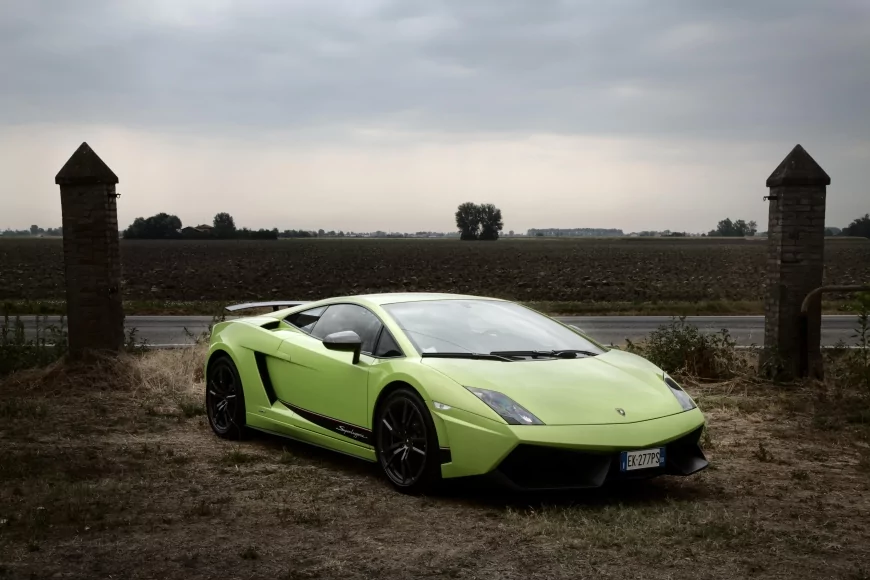
In March 2010, the Gallardo LP 570-4 Superleggera was presented in Geneva; more dynamic, lighter, powerful, and appealing. Shown to continue the success of the 2007 version of the same name, the weight of the LP 570-4 was reduced by 70 kg compared to the previous Superleggera, with a 570 HP (419 kW) engine and weight/power ratio reduced to 2.35 kg/HP. The changes to the exterior were made exclusively to improve the aerodynamics. This design increased the radiators' air flow rate and improved the front axle's downforce. Changes to the vehicle floor panels and the use of side skirts, and the new rear diffuser in carbon fiber improved the aerodynamics. Furthermore, the aerodynamic load on the rear axle was balanced using a fixed rear spoiler. In 2010, two other cars were presented with the same engine: the even lighter LP 570-4 Spyder Performante (a 65 kg reduction in total mass compared to the LP 560-4 Spyder) as well as the Gallardo LP 570-4 Blancpain Edition, which brought together the competitive spirit of the Super Trofeo with perfect road handling and an exclusive design inspired by the "Lamborghini Blancpain Super Trofeo," the one-make championship established in 2009.
In 2012, Automobili Lamborghini presented two versions of the updated model at the Paris Motor Show. These variants were even bolder and more extreme: the new Gallardo LP 560-4 and Gallardo LP 570-4 Edizione Tecnica, representing a further stylistic evolution of the first Lamborghini V10 model.
In January 2013, the development of a new GT3 program was announced, based on the Gallardo MY13. The same year, the Gallardo LP 570-4 Squadra Corse was presented at the Frankfurt Motor Show. This new limited series model, the most extreme of the Gallardo line-up, was inspired by the Gallardo Super Trofeo: the car competing in the Lamborghini Super Trofeo.
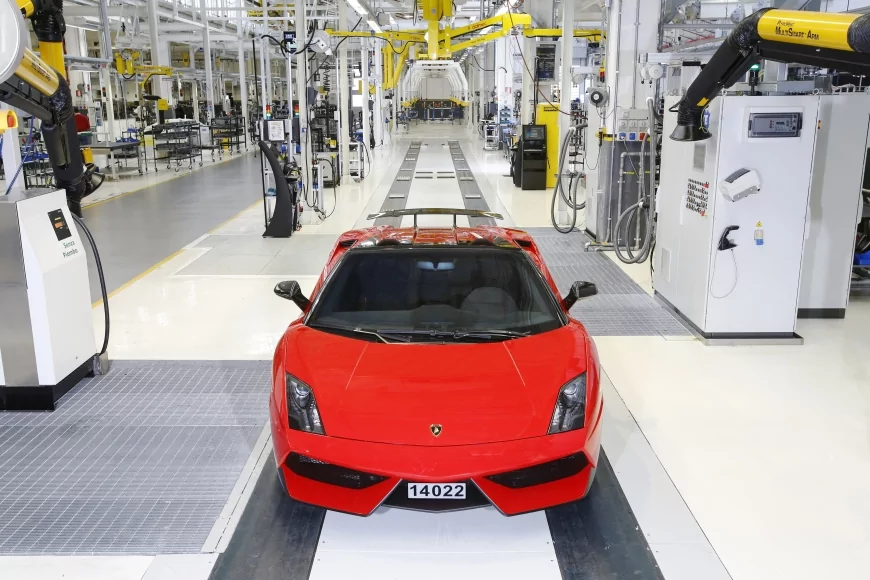
On November 25, 2013, the last Lamborghini Gallardo left the historic Sant'Agata Bolognese plant production line. The very last car (number 14022) assembled was a Lamborghini Gallardo LP 570-4 Spyder Performante in Rosso Mars color.
Over ten years of production, the Gallardo was made in many special editions, was sold in 45 countries, and, counting the 32 variants, reached a total of 14,022 units produced. These are numbers that, in their own right, make the Gallardo one of the most highly-rated super sports cars ever, with a place guaranteed among the icons of Italian design and automotive engineering.
Find more Cars
Bentley goes dark with new Black Edition models
Bentley's new Black Edition models combine the dark, daring, and assertive ...
McLaren 765LT
Lighter, more powerful, and with even higher performance levels on both roa...
Rolls-Royce Black Badge Ghost
This is the purest Black Badge motor car in the marque's history. This is t...
The Aston Martin Valour
The Aston Martin Valour celebrates the brand's 110th anniversary by honorin...
Mercedes-Benz Vans brings electrification to vanlife
The ultimate emission-free Vanlife experience might come sooner than expect...
Maserati celebrates its racing past with F Tributo...
Motorsports in its genes, a power rooted in the spirit of pure competition,...




















